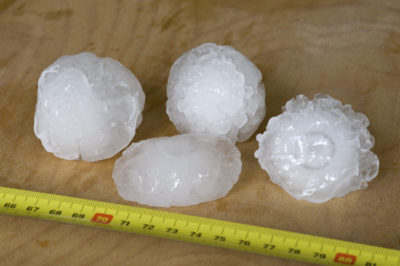“Better safe than sorry” is an important mantra when it comes to severe weather. Although it’s not always possible to predict hazardous weather, you can still prepare for it (which includes having adequate home insurance). Below, we’ve shared precautions that you can take to ensure that your home is safe from wind and hail damage.
Wind
Wind might not sound that scary, but in reality, it is a powerful and dangerous force of nature. According to FEMA, wind can force debris through windows, rip siding from exterior walls and even tear roofs from buildings. Here’s how you can protect your home:
- Remove overhanging or dead tree limbs that could fall on buildings or power lines.
- Repair loose or damaged building components, such as roof shingles and siding.
- Move breakable items away from doors and windows.
- Place important possessions and valuables in safe locations.
Hail
According to the National Severe Storms Laboratory, hail is formed when raindrops pass through currents of extremely cold air and freeze into small blocks of ice. Believe it or not, hailstones can range in size from a pea to a softball. Intuitively, the larger the stone, the greater the potential for damage. Even though the average hailstorm is only five minutes long, together they can cause $1 billion in annual crop and property damages. Here’s how you can protect your belongings.
- Check in on maintenance issues that could make your roof more susceptible to hail damage, such as surface bubbles and areas that lack gravel cover.
- The average lifespan of a roof is 20 years. But if you live in an area prone to severe hail, replace your roof every seven to 10 years.
- Make sure your roof-mounted equipment is protected by plenty of covering to help limit hail damage.
- Park your car in a garage or under a carport to protect the vehicle.
During a storm, remember your safety comes first. In the event of severe weather, stay inside or seek shelter quickly!






